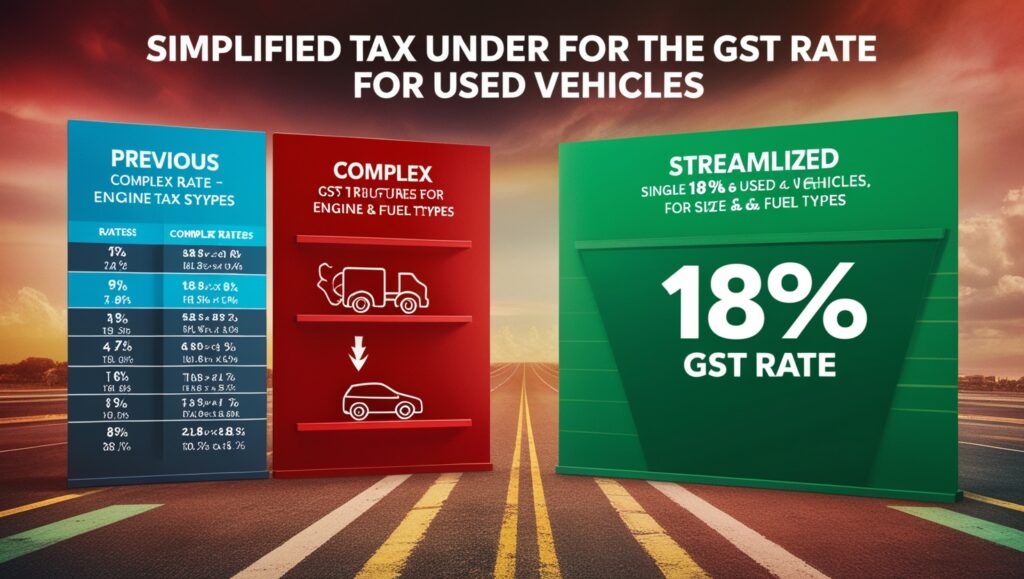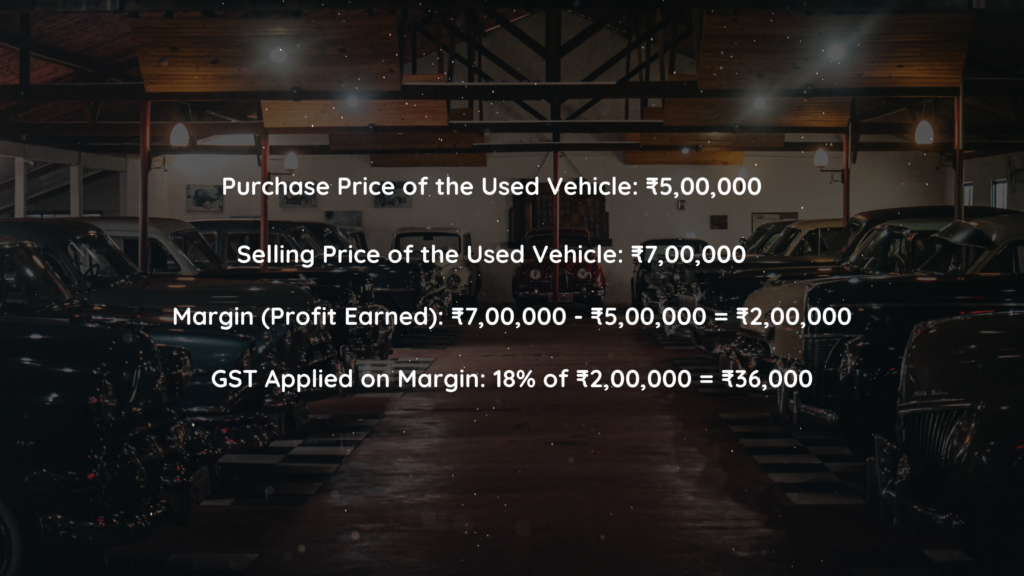The Goods and Services Tax (GST) Council of India has recently implemented a standardized 18% GST rate on used vehicles, including electric vehicles (EVs). This move aims to simplify the tax structure and ensure uniformity across the used vehicle market.

Understanding the Revised GST Rate on Used Vehicles
Previously, the GST rates on used vehicles varied based on factors such as engine capacity, fuel type, and vehicle dimensions. For instance, smaller petrol vehicles with engine capacities below 1,200 cc and lengths under 4,000 mm were taxed at 12%, while larger vehicles attracted higher rates. The new policy unifies these disparate rates into a single 18% GST, applicable to all used vehicles sold by registered businesses.

Applicability of the 18% GST Rate
It’s important to note that this 18% GST is levied on the margin of the sale—the difference between the purchase price and the selling price of the used vehicle. For example, if a registered dealer purchases a used car for ₹5 lakh and sells it for ₹7 lakh, the GST applies to the ₹2 lakh margin. This approach prevents double taxation and ensures that GST is charged only on the value addition.
For individual sellers not registered under GST, this tax does not apply. Therefore, if a private individual sells a used car to another individual, the transaction remains outside the purview of GST.
For example :-
The GST is not applied to the full selling price of a used vehicle but only to the profit margin that a dealer earns when selling it. Here’s a step-by-step calculation:
- Purchase Price of the Used Vehicle: ₹5,00,000
(This is the amount the dealer paid to acquire the used vehicle.) - Selling Price of the Used Vehicle: ₹7,00,000
(This is the price the dealer sells the vehicle for.) - Margin (Profit Earned): ₹7,00,000 – ₹5,00,000 = ₹2,00,000
(The difference between the selling price and purchase price is the margin.) - GST Applied on Margin: 18% of ₹2,00,000 = ₹36,000
(This is the GST that the dealer is required to pay to the government.)
Implications for Businesses and Dealers
The uniform 18% GST rate on used vehicles simplifies compliance for businesses engaged in the resale of vehicles. Dealers can now operate under a clear and consistent tax framework, reducing administrative burdens associated with varying tax rates. This change is particularly beneficial for dealerships dealing in a diverse range of vehicles, including EVs, as it streamlines the taxation process across all categories.
Impact on the Used Vehicle Market
The Indian used car market has been experiencing significant growth, with projections indicating a rise from USD 31.33 billion in 2022-23 to USD 70.48 billion by 2027-28. This translates to an accelerated growth rate from 6% to 16%, outpacing the new car market. The standardized GST rate is expected to further boost this sector by providing clarity and uniformity in taxation, potentially attracting more participants into the market.
Considerations for Electric Vehicles (EVs)
The inclusion of EVs under the same 18% GST rate as conventional vehicles marks a significant step towards tax parity. Previously, EVs were subject to different tax treatments, which sometimes led to confusion and compliance challenges. The unified rate simplifies the tax landscape for EVs, potentially encouraging their adoption in the secondary market.
Clarifications on Input Tax Credit (ITC)
Businesses eligible to claim Input Tax Credit (ITC) on vehicle purchases, such as car dealerships and transporters, should note that the GST is applicable on the sale value rather than the margin. For instance, if such a business sells a used vehicle for ₹10 lakh, GST at 18% applies to the entire sale amount, not just the profit margin. This distinction is crucial for accurate tax calculations and compliance.
Conclusion
The implementation of a single 18% GST rate on used vehicles represents a significant move towards simplifying India’s tax regime in the automotive sector. By standardizing the tax rate across all categories of used vehicles, including EVs, the GST Council has addressed previous complexities and ambiguities. This change is poised to enhance transparency, reduce compliance burdens for businesses, and potentially stimulate growth in the used vehicle market. As the market continues to expand, this streamlined tax structure will play a pivotal role in shaping its trajectory, fostering a more organized and efficient marketplace for used vehicles in India.
For more update GST or Tax visit here.









